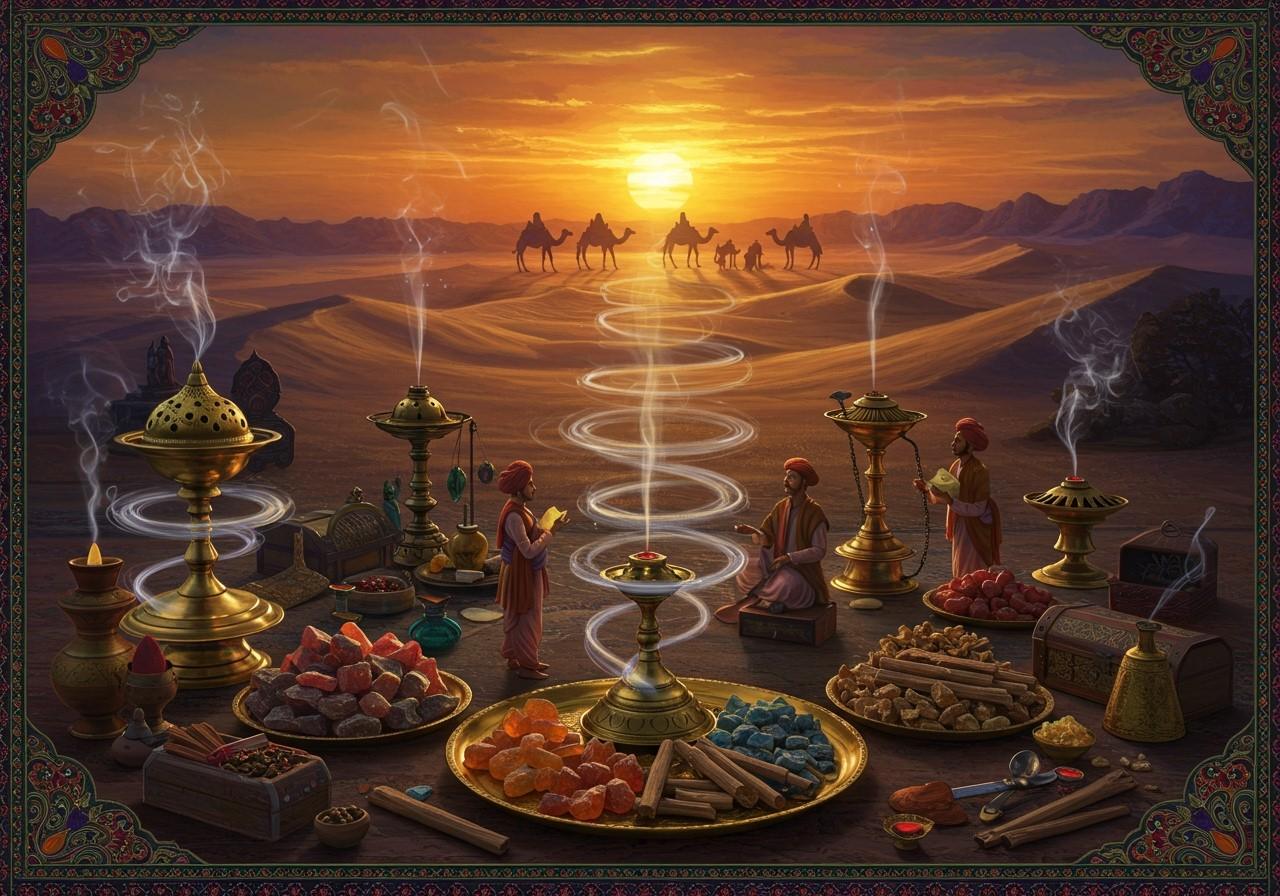
The Incense Route, a network of ancient land and sea trade routes, connected the Mediterranean world with sources of incense, spices, and other luxury goods in the East. This blog post delves into the history and significance of this ancient route, exploring its origins, the challenges faced by traders, and the cultural impact of incense.
The History of the Incense Route
The Incense Route thrived from the 7th century BC to the 2nd century CE, spanning over 1,200 miles. It facilitated the transport of valuable commodities like frankincense, myrrh, gold, pearls, and animal skins. Recognized for its historical importance, the Incense Route was designated a UNESCO World Heritage Site in 2005. Significant cities like Haluza, Mamshit, Avdat, and Shivta flourished along this route.
Origins and Destinations
Originating in regions like Southern Arabia (modern-day Yemen and Oman), the Incense Route extended to the Mediterranean, passing through Northeast Africa, Arabia, and India. The route’s southern Arabian origins were ideal for frankincense and myrrh production due to the specific geographical features of the region.
Perils and Safeguards of the Route
Traversing the Incense Route was fraught with danger. Traders faced harsh desert conditions, banditry, and tribal conflicts. For safety, they formed caravans, often relying on the protection provided by groups like the Nabateans, who secured safe passages. Political and economic agreements also played a vital role in ensuring safer trade. Oases and rest stops offered essential respite along the arduous journey.
Incense: A Cultural and Religious Cornerstone
Incense held immense cultural and religious significance across various civilizations. In ancient India, it played a vital role in Hindu rituals, with different types of incense carrying symbolic meanings. Its importance extended to Roman and Egyptian religious practices, and it also served medicinal purposes. The incense trade significantly influenced religious practices in distant lands, as evidenced by archaeological findings.
Economic Impact and Legacy
The Incense Route significantly impacted the economies of ancient civilizations. It fueled the prosperity of regions like Southern Arabia and played a role in the Roman Empire’s economy. Taxation and trade policies evolved around the incense trade, fostering alliances and networks that benefited communities along the route. Artifacts and inscriptions offer glimpses into the economic importance of this ancient trade network.
Poojn.in: Your Source for Authentic Incense
Looking to connect with the rich history of incense? Poojn.in offers a wide selection of authentic agarbatti (incense sticks) and dhoop. Explore our collection and enhance your spiritual practices.
- Diverse Selection: Discover a wide variety of traditional and unique incense fragrances, perfect for daily puja, special ceremonies, or meditation. We source high-quality agarbatti from trusted brands, ensuring authenticity and purity.
- Specific Needs: Find the perfect incense for different pujas and rituals with our detailed product descriptions, outlining traditional uses and significance. Whether you seek sandalwood for daily prayers, loban for havans, or floral scents for meditation, we have something for every need.
Explore our popular products:
- Swarna Champa Agarbatti: Enjoy the rich aroma of champa.
- Bharat Darshan Incense Sticks: Experience a blend of traditional Indian fragrances.
- Learn about the significance of Aarti: Deepen your understanding of this important ritual.
Visit Poojn.in today to discover our full range of spiritual products.
Conclusion
The Incense Route stands as a testament to the interconnectedness of ancient civilizations and the enduring power of cultural and religious practices. By understanding its history, we gain a deeper appreciation for the significance of incense in shaping traditions and fostering economic exchange. Explore the world of incense with Poojn.in and connect with this rich heritage.


